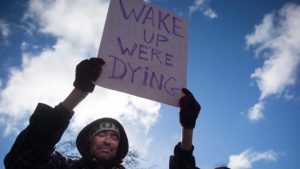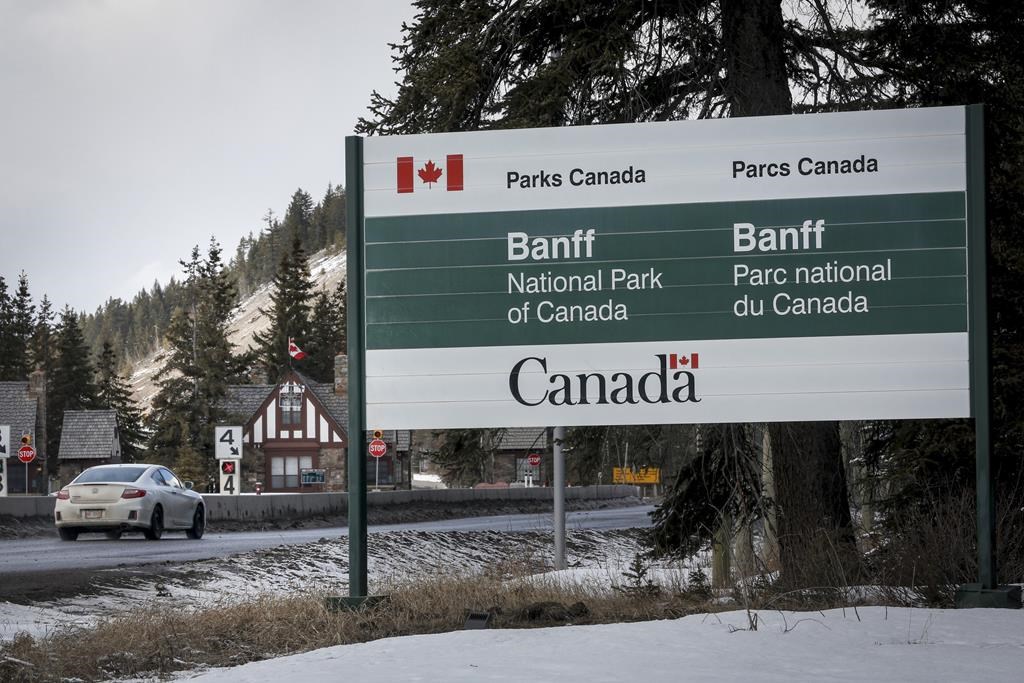Spike of unregulated drugs mixed with benzodiazepines creating targeted violence: experts
Posted February 12, 2022 8:16 pm.
Last Updated February 12, 2022 8:46 pm.
Vulnerable people who use unregulated drugs in B.C. are not only at risk of dying from the illicit toxic supply, but are facing risks to their safety like gender-based violence, according to advocates and health care professionals.
Along with the alarming provincial reports that 2,224 people died of illicit toxic drugs in 2021, Chief Coroner Lisa Lapointe said the detection rate of benzodiazepines spiked from 15 per cent in July 2020 to 50 per cent in December 2021.
Commonly used benzodiazepines that are usually prescribed are Xanax, Valium, or Ativan and may be used to ease acute anxiety. Dr. Paxton Bach, a medical director at the British Columbia Centre on Substance Use, further explains this means it is a “sitting medication.” But when sedatives are combined with opioids and alcohol, he says, “the results can be unpredictable and dangerous.”
“We’ve never seen them in this context before, and that is really creeping into the unregulated drug supply surprisingly quickly and being combined with opioids and sold on the street in unknown quantities and concentrations,” he told CityNews.
“These are further sedating agents which are mixed in unknown quantities, which lead to really unpredictable results. So it may lead to blackouts for hours or days at a time … you can imagine how vulnerable that makes somebody.”
Related Articles:
-
B.C. sets another grim record for illicit drug toxicity deaths in 2021
-
Drug user advocates say B.C.’s safe supply program still inaccessible, inadequate
-
Increased demands for safe supply as drug toxicity triples in B.C.
As benzodiazepines mixed with fentanyl become more prevalent, a major concern for the executive director of the Overdose Prevention Society, Sarah Blyth, is when people don’t know they’re taking it.
“People can be unconscious for hours and hours and hours. And even when they wake up, sometimes they don’t know where they are, or what they’re doing. So it really causes a lot of problems. People don’t know what they’ve done for a few days, and women are saying that they’ve woken up with no clothes, and all kinds of terrible things are happening to people. People are getting robbed, people don’t know where they have been,” she explains.
“Someone likened it to going into the hospital, and going under, and waking up and not really knowing what happened … so it obviously puts people that are already at risk in a really risky situation.”
“Dying is one thing, but all of the other things that happen to a person is also really a tragedy.”
Angela Marie MacDougall, with the executive director of Battered Women’s Support Services, tells CityNews over the past year, she has seen this tragedy unfold with the increased prevalence of benzodiazepines.
“Sexual assault, sexualized violence, intimate partner violence, has been an epidemic for too long. Anytime we introduce substances, we create the conditions where anybody that seeks to do sexualized violence is able to do so often with impunity, because of the ability to do so without detection, and to never face consequences,” she explained. “This is something of course, that we want to disrupt. When we’re talking about the presence of benzodiazepines within the opioids supply, the detection is actually vital, and it’s a significant piece of which we think needs to be paid very careful attention to, as it relates to women who could be at risk of sexualized violence.”
MacDougall adds people who are queer, have a physical or cognitive disability, or are otherwise marginalized are all at risk.
Bach admits benzodiazepines significantly impact overdose deaths; however, he emphasizes that it is “more than that. They’re affecting people’s day-to-day lives. ”
Sam Tobias is a research data coordinator for the BCCSU and explains benzodiazepines were first detected in the unregulated opioid drug supply in the late winter and early spring of 2019.
“But there were sort of sporadic every once in a while, but then when we declared COVID a public health emergency in March of 2020, after that the prevalence of benzodiazepines in the drug supply just shot up something like 20 per cent, at least. And it’s remained high since then, some months even in the drugs that we’ve checked for our project.
“We’ve detected them in 100 per cent of opioid samples that have come in, in some settings in the Interior, on the Island 100 per cent of samples of opioids tested positive for benzodiazepines. And in the Lower Mainland, it’s a bit lower generally with different drugs and supplies there.”
Tobias and Bach both explain that apart from the risk to people’s safety, benzodiazepines are also affecting peoples response to medication that reverses opioid overdoses — Narcan.
“If someone’s not able to rouse easily, it’s hard to tell whether or not they’re breathing. Because opioids affect your breathing more strongly than benzodiazepines. If someone’s not able to wake up and tell you like, ‘Yeah, I’m fine’ because of the benzodiazepines in their system, they might be more susceptible to an overdose,” Tobias explained.
‘Not nearly enough is being done’
Bach, Tobias, Blyth, and MacDougall are all calling on governments to make proactive changes to address the fatal crisis.
“Our current approach is not working and we desperately need alternatives. I’m in the hospital right now. And I can tell you, we’re overwhelmed here. Our traditional tools are just not cutting it. And we’re losing ground faster than ever,” Bach urged.
The deaths in 2021 reported this week by the province has only increased every year since B.C. declared a public health emergency in 2016. With the emergence of benzodiazepines, Bach says it goes to show how the drug supply is becoming increasingly potent and volatile year after year.
“This really represents the next level in the evolution of this drug supply,” he said.
“Not nearly enough is being done. More people are dying [from the toxic drug ciris] than of COVID. And the benzos, that have been put into the mix, are just making it even worse,” Blyth added.

Dean Anderson holds up a sign before a march on the first National Day of Action to draw attention to the opioid overdose epidemic, in the Downtown Eastside of Vancouver, B.C., on Feb. 21, 2017. THE CANADIAN PRESS/Darryl Dyck
Blyth says the focus needs to be on greater access to safe supply so people know what they are taking and the dose.
“At the end of the day, it’s going to save lives,” she said.
Tobias agrees safe supply is needed and adds, “I think harm reduction approaches work best when they’re used in multitudes.”
“So drug checking is one way to find out what you have before you ingest your drugs. But drug checking technologies are not necessarily perfect, they can still miss things. So using an overdose prevention site you have people there to respond if something bad were to happen.”
Related Stories:
-
Drug user advocates say B.C.’s decriminalization proposal falls short amid ongoing emergency
-
Drug user advocates say B.C.’s safe supply program still inaccessible, inadequate
-
Vancouver advocate wants language around drug-related deaths to change to reduce stigma
-
Overshadowed by a pandemic, Canada’s opioid crisis worsening as drugs become more potent
According to the B.C. Coroners report, last year no one died of illicit drug poisoning at consumption sites and overdose prevention sites. However, these are largely geared toward injection drug users.
Blyth also urges the loved ones of people who use drugs to create a safe space so they can safely use while supervised.
Much like the province and country mobilized to mitigate the spread and impacts of COVID-19, Bach says the same must be done to respond to the toxic drug crisis.
“We’re not seeing a response that is commensurate with the scale of that damage,” he said.
“We are overwhelmed in this hospital dealing with all the consequences of this poisoned drug supply. All of our traditional tools are are failing us more and more quickly, and the deaths keep climbing. So looking at better solutions to a poisoned drug supply as emergency response is the only way that I can imagine starting to curb overdose deaths tomorrow. And that’s looking at alternatives to an unpredictable drug supply, a regulated predictable alternative, that’s available to people use drugs.”
Blyth says she believes federal leaders understand how desperate the situation is, but she says it’s time someone “take the bull by the horns,” and take the advice of experts: physicians, public health experts, frontline workers and people with lived experience.
“I’m just hoping that all parties, all levels of government will just focus on one thing and that’s getting people an alternative, especially people in the Downtown Eastside. People are dying every day … We’ve been holding memorials for people weekly at overdose prevention site. We’ve just seen so much death. It’s more than COVID, it’s more than any kind of war that Canada has been in. It’s just, it’s incredibly, awfully terrible and it we just need more support,” she said.
“Until that happens, we’re going to be stuck like this. It’s costly even from a taxpayer perspective, having non-stop ambulances. Even the corner is just filled with bodies, and it’s just a terrible, terrible time.”








